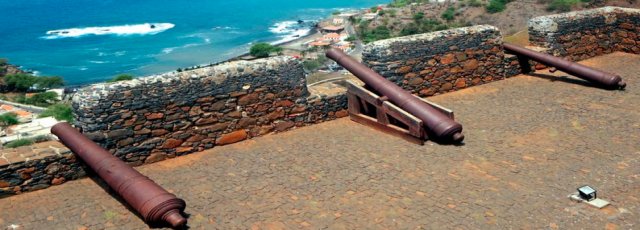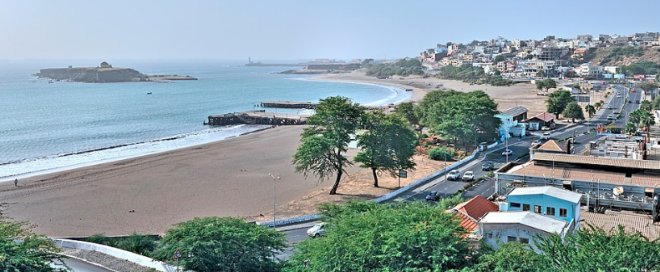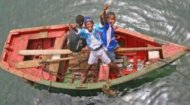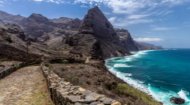|
Education has risen as a central pillar of Praia’s social development. The city hosts several secondary schools, vocational institutes, and the University of Cape Verde’s main campus. While literacy rates have improved dramatically since independence, challenges persist: overcrowded classrooms, limited resources, and the brain‑drain of bright students who seek advanced studies abroad. Nevertheless, an emerging generation of entrepreneurs, artists, and civic leaders is reshaping the city’s cultural narrative, infusing it with fresh perspectives while honouring traditional forms like morna and funaná music. After school, teenagers often congregate at the Praia Youth Centre, where they practice capoeira, play soccer on improvised pitches, and attend workshops on digital media. The city’s vibrant music scene is evident in the many “batuques” (drum circles) that echo through the evenings, especially during the annual Carnival, when streets burst into a kaleidoscope of costumes, samba rhythms, and flamboyant parades that draw participants from every corner of the archipelago.
Tourism, once concentrated on the island’s pristine beaches and historic towns, has gradually shifted toward Praia because of its lively cultural scene and improved infrastructure. Boutique hotels, guesthouses, and a handful of international chains now line Avenida Amílcar Cabral, offering visitors a base from which to explore the city's museums, markets, and nightlife. The service sector - hospitality, banking, and telecommunications - accounts for a substantial share of employment, yet wages remain modest, prompting many households to rely on remittances from relatives abroad, particularly in Portugal, the United States, and the Netherlands. Small‑scale entrepreneurship thrives in informal markets. The Mercado da Torre, a sprawling open‑air bazaar, is a microcosm of Praia's economic dynamism: fishmongers display freshly caught tuna and mahi‑mahi, women sell handcrafted jewellery, and itinerant vendors hawk locally produced palm wine. These activities generate income for thousands of families, reinforcing a resilient informal economy that cushions the city against macro‑economic shocks.
Climate change poses a long‑term existential threat. Praia’s low‑lying coastal zones are vulnerable to sea‑level rise, coastal erosion, and occasional storm surges that damage infrastructure and displace residents. Freshwater scarcity, exacerbated by erratic rainfall patterns, forces the city to rely heavily on desalination plants and imported water, both of which strain public finances. The municipality has begun integrating climate‑adaptation strategies into its urban plan, emphasising green spaces, rainwater harvesting, and resilient building codes. Lastly, the COVID‑19 pandemic underscored the fragility of Praia’s tourism‑dependent economy. Travel restrictions precipitated a sharp decline in visitor numbers, slashing revenues for hotels, restaurants, and transport operators. While the sector has shown signs of recovery, the experience highlighted the need for economic diversification and stronger social safety nets.
For the people who call Praia home, daily life is a blend of tradition and modernity, shaped by the island’s Atlantic breezes and its communal spirit. Mornings often begin with the aroma of freshly brewed café com leite drifting from street cafés, where locals gather to discuss politics, football, and the latest news. The city's public transport system, primarily a fleet of shared minibuses known as 'aluguéis,' weaves through narrow streets, ferrying commuters to the bustling commercial district or the quieter residential neighbourhoods perched on the hillsides. |
Praia Profile |
Praia Profile |
Praia Profile | Praia Profile |
|
|

|
Food occupies a central place in Praia’s social fabric. Fresh fish, grilled over open flames and seasoned with a generous dash of piri‑piri, is a staple at lunchtime, while pastéis de queijo (cheese pastries) and cachupa (a hearty stew of corn, beans, and meat) dominate dinner tables. Restaurants such as Mogador and Casa da Morna serve inventive dishes that blend Portuguese influences with African flavours, all while featuring live performances of morna - Cape Verde’s soulful, melancholic music popularised worldwide by the late Cesária Évora. Food festivals, like the annual Festival da Gastronomia, invite chefs from across the islands to showcase regional specialities, turning the city into a gastronomic playground. On Saturdays, the market near the city hall transforms into a sensory carnival: vendors chant their wares, children chase one another amid stalls of tropical fruits, and the rhythmic beats of drums echo from nearby community centres. Praia has a number of attractions worth a visit. The Presidential Palace, an elegant neoclassical building perched on a hill overlooking the bay, was constructed at the turn of the 19th century to house the Portuguese governor. There are guided tours on offer revealing the nation's post‑independence narrative through exhibits of historic documents and photographs. Its surrounding gardens provide a space for contemplation, offering panoramic views of the Atlantic horizon. A short walk from the palace is Praça Alexandre Albuquerque, the city's central square. Lined with palm trees and colonial‑style kiosks, the plaza buzzes with activity: street musicians perform traditional batuques, children play hopscotch, and elderly men sit on benches, sharing stories of the city’s past. The square is also the focal point for national celebrations, including Independence Day on July 5th, when fireworks illuminate the night sky. The Museu Etnográfico (Ethnographic Museum) showcases a curated collection of artefacts - from traditional fishing tools to intricately woven textiles - that tell the story of the island's inhabitants. Adjacent to the museum, the Museu da Tabanca celebrates African‑derived dance and music traditions, offering interactive workshops where visitors can learn the steps of the popular “tabanca” dance. The Praia Cultural Centre, housed in a refurbished colonial building, hosts rotating exhibitions of contemporary Cape Verdean art, film screenings, and literary events with a rooftop terrace that offers great views of the city’s skyline. Also worth a visit are the Jaime Mota Barracks, dating from 1826, and the Monumento de Diogo Gomes, named after the Portuguese navigator who discovered the island of Santiago in 1460. History buffs may want to note that Praia was the first stop of Charles Darwin's voyage with HMS Beagle in 1832! For those seeking sun and sea, Praia da Gamboa (Gamboa Beach) provides a tranquil stretch of golden sand backed by gentle waves, ideal for swimming, kite‑surfing, or simply watching the sunset. Less frequented but equally captivating is Praia da Quebra‑Canela, a small cove where local fishermen launch their boats at dawn, offering a glimpse into the daily rhythm of maritime life. Unfortunately, despite its location, many report that Praia is unwelcoming to tourists with frequent reports of muggings, litter everywhere and unsanitary conditions, not least because of no public toilet facilities. Overall, Praia is somewhat run down with crumbling colonial buildings dating from the 1820s, wrecked and rusting boats littering the shoreline and tin-roofed stalls straddling the markets alongside shanty-type buildings that line the streets and continue as you leave the dusty town. Check out the video for further insights into Praia's profile, then use our interactive map to explore the city in more detail. |

 Praia's population, estimated at around 150,000 residents, reflects the island chain's complex demographic tapestry. The majority identify as Cape Verdean Creoles - a blend of African and European ancestry - while smaller communities of Portuguese expatriates, Brazilian migrants, and a growing number of West African workers add further nuance. Portuguese remains the official language, but Cape Verdean Creole (Kriolu) dominates everyday conversation, its melodic cadence echoing through markets, schools, and street cafés. Religion, too, is a defining element of social life. Roman Catholicism, introduced by the Portuguese, remains the predominant faith, with Sunday mornings seeing families gathering at the Igreja Nova, the city’s newest Catholic parish, for Mass, while others attend services at Evangelical churches that have proliferated in recent decades. It is a feature of Praia's life that Christian denominations, Spiritist churches, and indigenous spiritual practices coexist peacefully.
Praia's population, estimated at around 150,000 residents, reflects the island chain's complex demographic tapestry. The majority identify as Cape Verdean Creoles - a blend of African and European ancestry - while smaller communities of Portuguese expatriates, Brazilian migrants, and a growing number of West African workers add further nuance. Portuguese remains the official language, but Cape Verdean Creole (Kriolu) dominates everyday conversation, its melodic cadence echoing through markets, schools, and street cafés. Religion, too, is a defining element of social life. Roman Catholicism, introduced by the Portuguese, remains the predominant faith, with Sunday mornings seeing families gathering at the Igreja Nova, the city’s newest Catholic parish, for Mass, while others attend services at Evangelical churches that have proliferated in recent decades. It is a feature of Praia's life that Christian denominations, Spiritist churches, and indigenous spiritual practices coexist peacefully. Praia’s economic profile has long revolved around its maritime gateway with the Port of Praia, though smaller than Mindelo’s, remaining a vital hub for the import of essential goods - fuel, foodstuffs, and construction materials - and for the export of agricultural products, notably bananas and coffee. The harbour's recent modernisation projects, funded through public‑private partnerships, have boosted its handling capacity and attracted regional shipping lines, reinforcing the city's status as a logistical node for the Atlantic.
Praia’s economic profile has long revolved around its maritime gateway with the Port of Praia, though smaller than Mindelo’s, remaining a vital hub for the import of essential goods - fuel, foodstuffs, and construction materials - and for the export of agricultural products, notably bananas and coffee. The harbour's recent modernisation projects, funded through public‑private partnerships, have boosted its handling capacity and attracted regional shipping lines, reinforcing the city's status as a logistical node for the Atlantic. While Praia’s trajectory has largely been upward, the city grapples with several challenges that threaten its long‑term prosperity. Unemployment, especially among youth, remains stubbornly high. The limited diversification of the formal economy means that many graduates find few suitable positions, pushing them toward either informal work or emigration. This “brain‑drain” erodes the local talent pool and creates a feedback loop that hampers innovation. Housing scarcity compounds socioeconomic pressures. Rapid urbanisation has outpaced the supply of affordable apartments, leading to the proliferation of informal settlements on the city’s periphery. These neighbourhoods often lack basic services, such as clean water, sewage, and reliable electricity, which heightens public health concerns. In recent years, municipal authorities have launched housing initiatives, but funding constraints and bureaucratic hurdles slow progress.
While Praia’s trajectory has largely been upward, the city grapples with several challenges that threaten its long‑term prosperity. Unemployment, especially among youth, remains stubbornly high. The limited diversification of the formal economy means that many graduates find few suitable positions, pushing them toward either informal work or emigration. This “brain‑drain” erodes the local talent pool and creates a feedback loop that hampers innovation. Housing scarcity compounds socioeconomic pressures. Rapid urbanisation has outpaced the supply of affordable apartments, leading to the proliferation of informal settlements on the city’s periphery. These neighbourhoods often lack basic services, such as clean water, sewage, and reliable electricity, which heightens public health concerns. In recent years, municipal authorities have launched housing initiatives, but funding constraints and bureaucratic hurdles slow progress.






